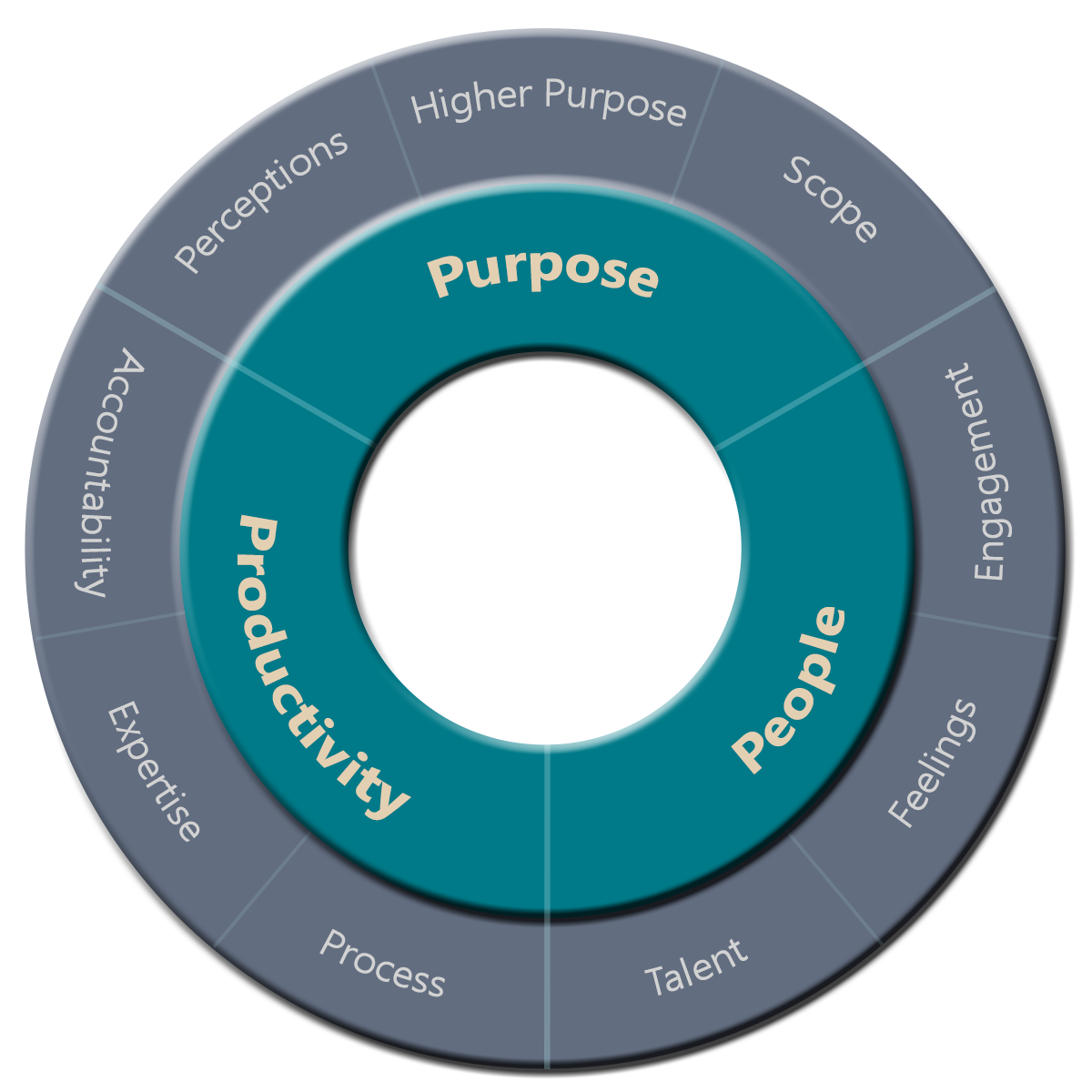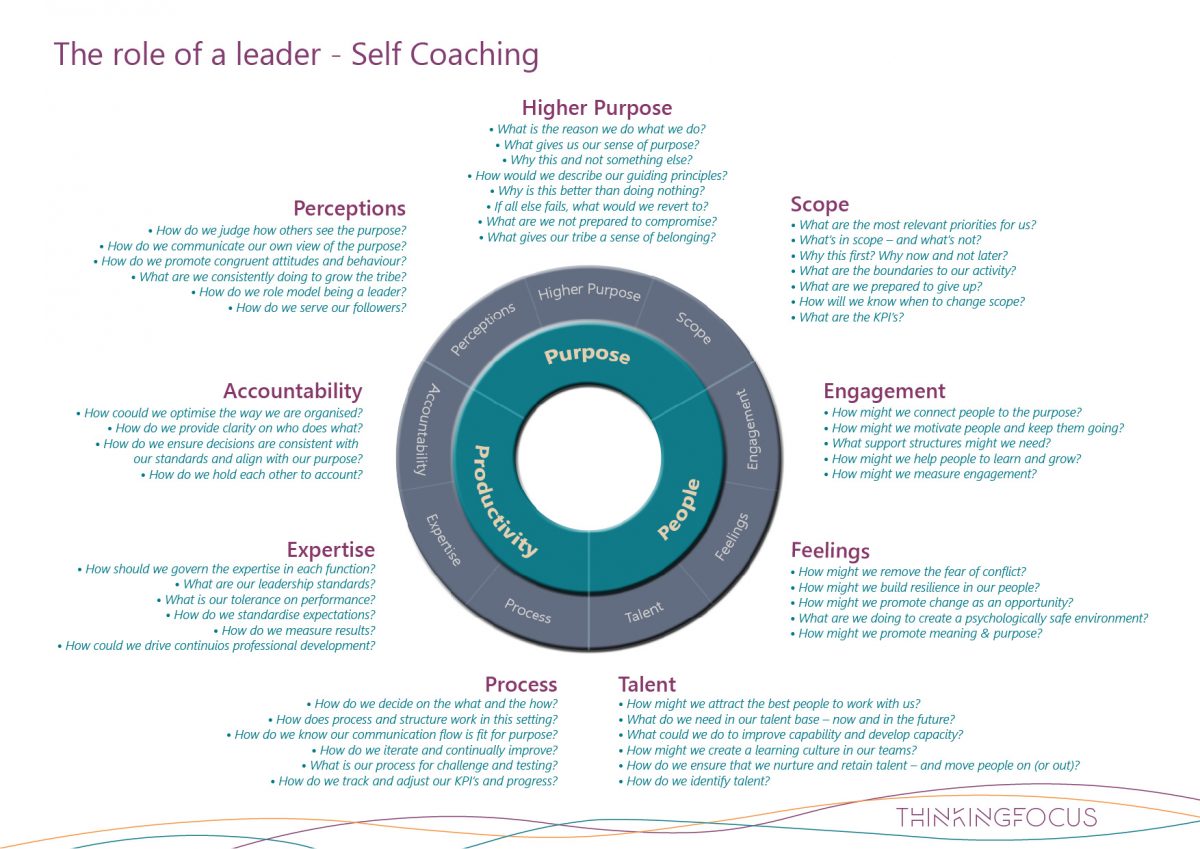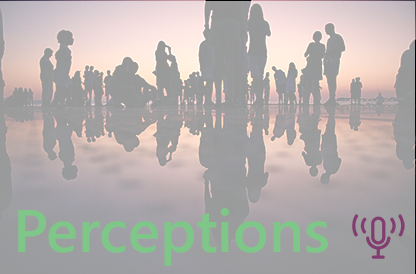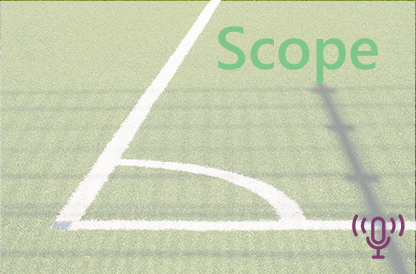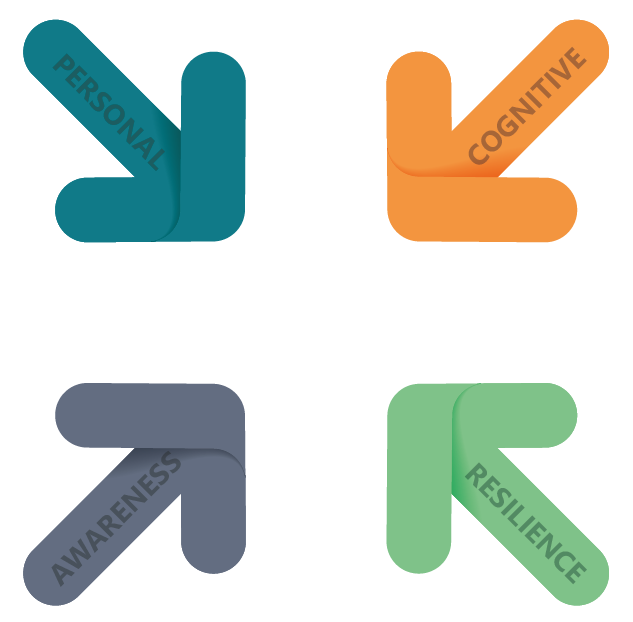We train a lot of leaders and aspiring leaders, and one of the questions we get asked the most is, ‘What is leadership?‘. We have all been in leadership positions and asked ourselves the same question. While it sounds like an easy question, so much has been written about the different styles of leadership, there is very little research or thought leadership about what it is that leaders actually do. We know, we spent ages searching!
So we started piecing together different ideas about what leaders should focus on, and talked to lots of different leaders about what they saw as essential. We quickly noticed that three areas formed the core of everything, Purpose, People and Productivity. Each of these also appears to break into three parts.
From this, we built a model of leadership. It is not about leadership style, it is not focused on how leaders approach the task; it is about the areas where leaders need to get involved, do things. This is about leadership practice. A checklist for leadership.
Perceptions
Leaders act as the PR person to build a tribe committed to achieving the outcome. This may be helping others to understand how what they are doing fits with what you are doing, motivating others to help or gaining acceptance of its importance to reduce barriers to success.
Higher Purpose
The leader helps create / shape the higher purpose and takes the lead on sharing the vision (or challenge) with others. Higher Purpose is about articulating why this is important, your vision for it, and why doing nothing is not an option. The higher purpose creates stability for the group, aligning everyone in the same direction, allowing the team to work as one.
Scope
Often leaders have a role in deciding what needs doing, but this may be less than you think. The primary role of the leaders is to define the scope against the purpose, helping followers understand the boundaries, and prioritise resources on the most impactful areas.
Accountability
The leader takes responsibility for ensuring that things are organised. This may sound a lot like project management, but it is more about helping the group agree on how to organise than being the organiser. Leaders need to create consensus around how decisions are made and how the group holds each other accountable.
Expertise
Leadership is rarely a stand-alone function, with many leaders bringing subject matter expertise to the group as well as leadership. The leader defines the standards and ensures governance is in place. Using their expertise in the topic, leaders bring together different experts and opinions to achieve the outcome.
Engagement
Leaders connect the group to the purpose, helping the group members understand what the goal is and what it means to them individually.
Leaders are also motivators; this ranges from helping group members find their own motivation, energising the group (when the pressure is on) and providing the rewards and recognition that group members need.
Feelings
Groups work at their best when the environmental conditions allow them to learn, grow and push the boundaries, and leaders hugely influence these environments, creating or occasionally destroying psychological safety.
Managing conflict (without it becoming personal or hurtful) and helping the team deal with the pressure are all areas where leaders take ownership.
Process
Leaders ensure conformity and standardisation while at the same time leading on change and improvement. Leadership creates a culture of efficiency (standard approaches and simplification) and drive continuous improvement, ensuring that things are always getting better (cheaper, faster and offering more value).
Talent
It is essential that leaders surround themselves with the talent to pursue the goals. This means recruiting the right talent into the team, exiting those who no longer wish to be part of the vision, and growing team members to ensure that the skills keep pace with the demands.
Nurturing talent is also required so that we protect the talent assent, developing and growing talent so that people can be moved on and up and letting go of talent that no longer fits with future aspirations of the business.
This model is a work in progress. We have used the model with the leaders that we train and coach, and have had lots of feedback. This has helped shape the version of the model that we use today. It has also told us how useful people find this; it helps them understand what is expected of them as a leader, offering more detail than the usual ‘just lead people’. Often, leaders recognise that they are comfortable with two of the three areas, with the third one needing some development.
We may have missed something; let us know if we have. We love getting feedback, we enjoy learning, and most importantly, it will help us improve the model to benefit other leaders.
What is leadership? – self coaching questions
We have created a set of questions for each of the nine areas. These will help you explore your approach and discover where you might need to put a little more focus and identify the areas where you already excel.
Leadership Podcasts
Our podcast series covers a range of topics on leadership. Here are the podcasts that talk about these nine areas, check out the whole series by looking for ‘The Question is’ or searching for ‘Thinking Focus’ wherever you get your podcasts.
Becoming a leader?
More and more people are taking on leadership positions. Leadership might involve having people reporting to you, but often leaders are heading up virtual teams or taking the lead in a specific area. You might even find yourself the leader of an idea – that is how change starts!
Leaders can range from the most senior to very junior in organisations; leadership is more of a mindset than a job title.
If you find yourself in a leadership position or aspire to become a leader, then our Pillars of Leadership is for you. It is a valuable tool to help you explore what it means to be a leader and identify where some development might be needed.
Pictures from Mark Fletcher-Brown, Robert Katzki, Mario Purisic, Markus Spiske, Tengyart, Aaron Burden, Kelly Sikkema, Fred Kearney & UX Indonesia at unsplash.com.

